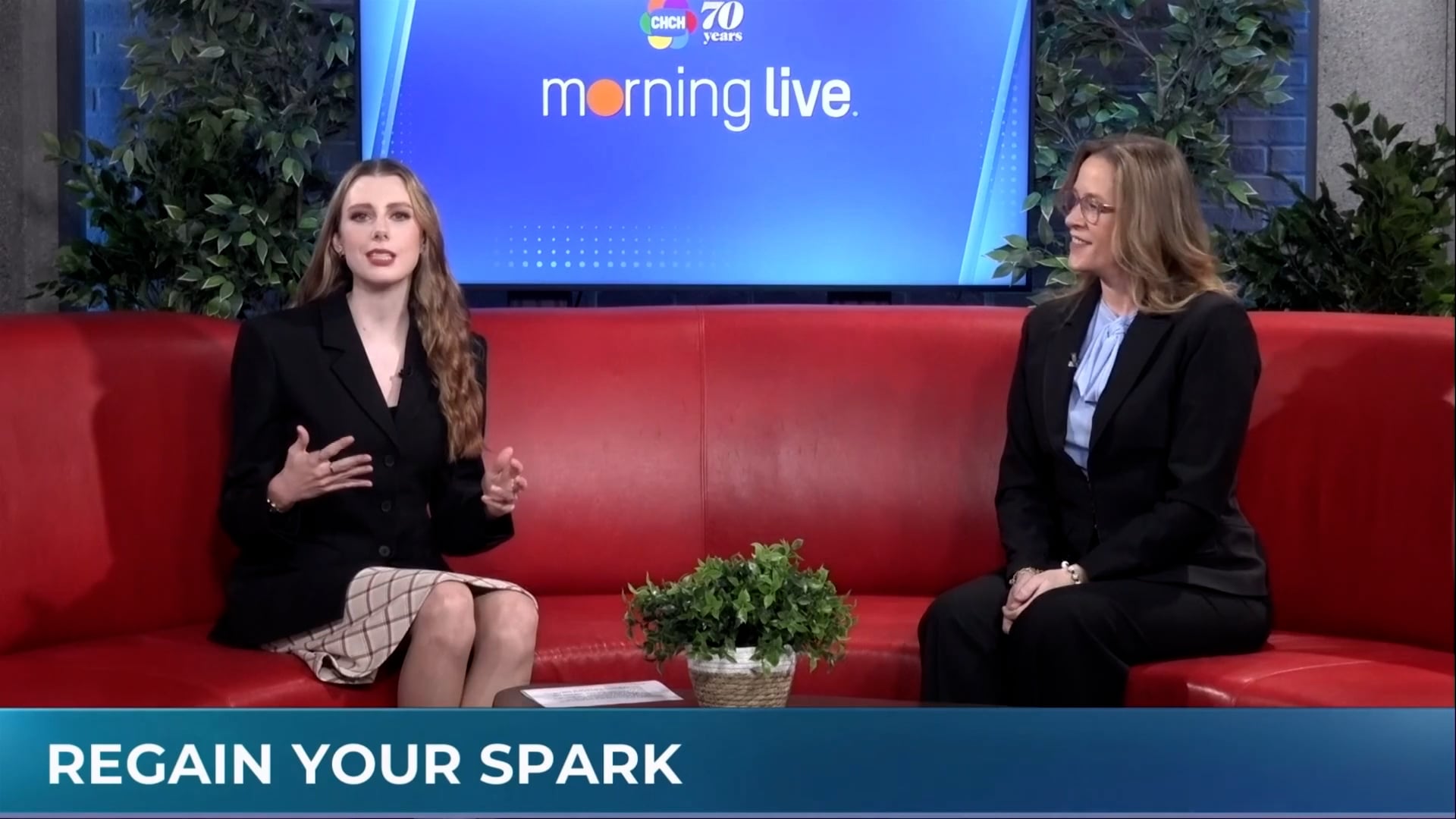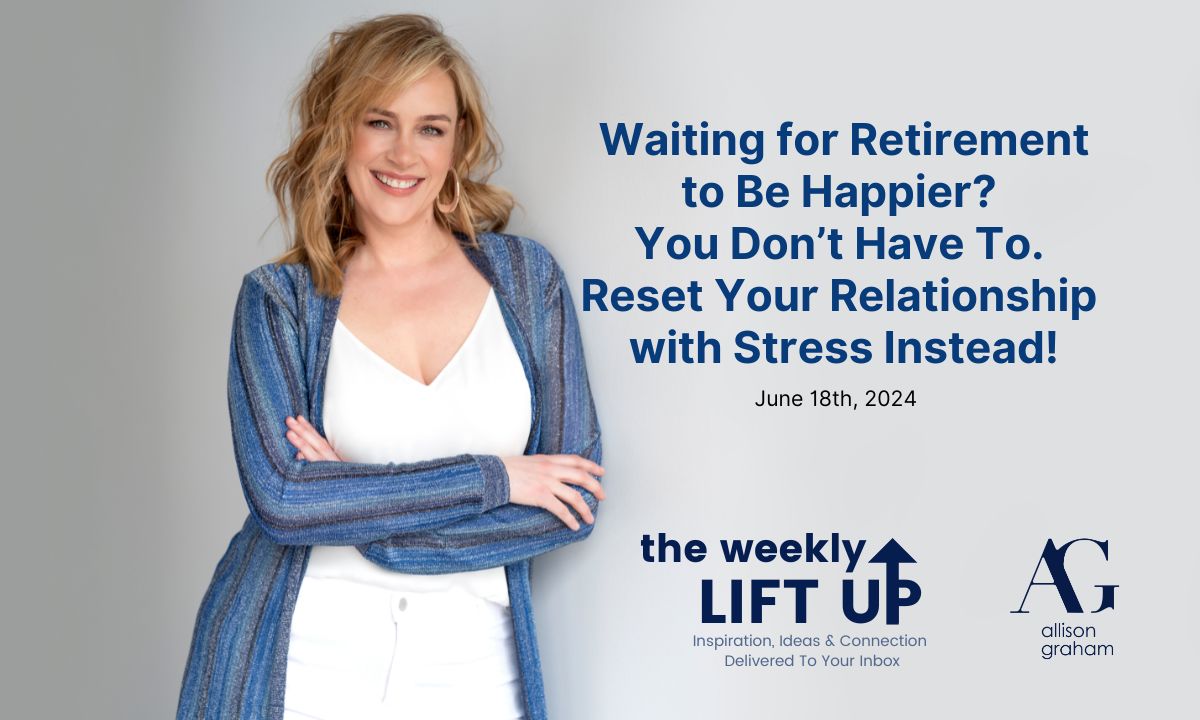The root cause of burnout culture is stress acceptance culture. Society, especially most workplaces, accept stress as if it’s something that’s normal that should be embraced. In this video, I talk about how to change the culture of burnout and why stress acceptance culture is a problem to productivity.
Transcript (Unedited) of How A Leader Can Change the Culture of Burnout for Their Teams
How to Change the Culture of B…ison Graham Lockdown Lift Up
SUMMARY KEYWORDS
burnout, article, signs, talking, culture, company, happening, baseline, lawyer, adversity, effective, stressed, exhausted, leader, checkups, toggled, languishing, facing, workload, puzzle
SPEAKERS
Allison Graham
Allison Graham 00:00
May I go look over the date? It’s 17th. excited to have you with me. And I am obviously in packing mode. So if you’ve been walking watching along, you know, it’s happening, I am actually moving during this lockdown. So that’s happening on Friday, Saturday, so I won’t be online. You know, obviously, and I apologize for the boxes in the background, but you still get Winston. So that’s great. And I was like, okay, just doing some box packing. I was like, What am I going to talk about? Well, when I was taking a little break this morning, I read an article that brandy Edwards actually our brand new Wilson sorry, different friends who posted and it was actually from the assigned counsel Incorporated. It’s temporary services for the legal staffing industry. But here’s the neat thing. They were talking about lawyer burnout. And I know that I speak for lawyers, but I speak for a lot of ever other professional services firms as well. And I think that this article around how do you support a culture that is not like conducive to burnout? I want I thought what we do for this, this LinkedIn live is go through the article. And I’ll just share some high level thoughts that they’ve shared, which I think are excellent. And then I’m going to give a bit of commentary on how I believe we can incorporate it and even take it a step further, to be more effective. So I skimmed the article out, like every locked out, lift up, these are off the top of my head me on, you know, just my opinion, as I see the world. Hopefully have a little laugh, hopefully give you some ideas that you can take and mull around and make your own. And if you’re leading a team, or if you’re part of a team, and burnout is part of your culture, then maybe what we can glean from this article is going to be really effective. Now, something I’ve learned to do last week, was be sure I’m actually feeding life. Because Have you missed it. I did an entire live 22 minutes I think it was and then realized I wasn’t actually I toggled on. So I’m not going to do that twice. But it says I’m live. It says I’m toggled on. So thank you for being here with me. And let’s rock and roll through this article.
Allison Graham 02:31
Okay, so as I mentioned, it’s called lawyer burnout is unacceptably high. And I think we can interpret that for every professional. I mean, this, the state of the rates right now of burnout, and stress leave are incredible. And you may want to look back on one of my former videos that was about languishing, which has become a very popular term. And the essential thing with languishing is like it’s the precursor to burnout. It is like the three to five months before burnout when you just kind of feel me. Yeah, you know, all those sound effects work. Right. Okay.
Allison Graham 03:12
I sure missed the lift up on Friday. Oh, did you catch the replay, though? I hope you did. Because I you all know because you were ready for three o’clock. I was talking to myself not live and then I did want it like three? I don’t know 45 Or something started late, but the regulars weren’t, weren’t there. And Amanda, awesome to have you here as well. And actually, Amanda, I know the company you worked for and they are exceptionally your leadership is exceptionally committed to helping people figure out how not to be burned out, right like to put the supports in place. Because here’s the thing about burnout is the outside circumstances don’t change. You know, so often we sit and we wait for the magic, okay, one day, I’m going to be less stressed. One day, things are going to slow down. One day this like nothing, all this work is going to, you know, start to slow down. Yeah, it doesn’t work like that. The work never slows down. And the pressure from the outside world will never stop. There’s always going to be things going on in the world. There’s always going to be different challenges that we’re facing. And so the only thing we have to control is how we react to that. And my work is trying to get people to react in a better, less stressful way to all of the chaos that’s going around. And so the funny thing with burnout is like, there’s not a lot of external pieces of the puzzle somebody else can put into place to stop your burnout. It has to be how you show up and how you respond to all of the stressful events that are happening around you. And yes, Amanda, you’re on management is amazing. I happen to know them. Specifically one, as you know, oh and Suzanne co2, so they weren’t for the same company, which is awesome. I actually one of the first speeches I gave a when COVID happened. So really grateful for them. So let’s look at this article, it says, you know, it talks, of course about the mental health epidemic. And I will for sure, put this in the the link on all of the different live feeds. But it’s about taking steps in the right direction. So the very first thing is watching for signs of burnout. Really important, but also for yourself. Because I think so often we’re caught up in the vortex of stress. And we’re just like, kind of going and we’re keeping our head above water. I remember I got a note from someone and he said, You know what my goal every day is to put out the fires that are placed in front of me and be sure my kids are still alive. And he said, that’s all I can handle, in the way that this work is like working from home and all the pressure and everything that’s going on. And so watching for those signs, but like the thing is that that’s unsustainable, right, our stress is supposed to like shoot up our hormones, right everything like when we’re in danger, like a predator. And then when we’re back to safety is supposed to come back down and even out and go back to our baseline. But the problem is, is that we burn out when we never actually when we just say spiked. And we rarely come back down to our baseline or we don’t come back down enough that we actually get the refresh and recharge that our body needs in order to go back up and now replenish our reserves. So watching for the signs of burnout. The World Health Organization actually did a some work on this where they showed that on a sec, you’re all actually I might have it SPECT I do burnout. Let’s find this. Okay, this is a slide from one of my presentations about the World Health Organization. But when you look at it negatively negativism cynicism, so start looking for signs of that is somebody more pessimistic than they used to be actually I’m doing a speech for an organization for their company, because the HR director was like, you know, what I noticed is over the last six months, people have become a little bit more pessimistic. And that isn’t typical of our culture. And so that’s a great sign that you’re on the road to burnout, looking for mental distance from one’s job. And, by the way, I totally recognize that I’m working backwards up the slide. But that’s the lockdown lift up, didn’t know I was gonna bring those out for this thing. But mental distance from one’s job and like, here’s the thing, you’re never going to admit this to your leader. Like, because this is the, I’m just dialing in, I’m not in the moon, I don’t really want to do this anymore. I give up sort of underlying tone, well, who’s gonna say that to their leader? Right, like, I think that’s probably not the sign that you could be looking for that you’re actually going to get constantly being exhausted and energy depletion. Now, the problem is, is that if you have little toddlers at home or a kid was sick, you might be exhausted anyway. Or if you’re, if you have some sort of a health challenge that plagues you and exhausts you, then this wouldn’t necessarily apply. But think about the prolonged exhaustion that doesn’t have an obvious answer. That could be what’s taking you towards that burnout, a piece of the puzzle. So these are the things we want to look for, but also like reduced professional efficiency. So if I go forward here, oops. When you think like, if somebody starts dropping the ball or is constantly missing deadlines, and that isn’t in their character, that might be something to actually be looking out for as well. Okay. So that when we look at this article is just something that let’s see. Okay, that is we’ll go back here. Okay. So that is what we’re looking for. And so watching for the signs as a leader, those are the types of signs you want to look for, but for yourself, looking for those signs as well. The second suggestion they have is conduct regular check ins, requires regular communication. If you’re only checking in once in a blue blue moon, they cannot establish a solid baseline of attorney stress levels and wellbeing. Nor can you build any reliable level of trust, which I think is absolutely true. Here’s the challenge. When people are really busy, and their workload is insignificant, they may be less likely to actually commit indicate in an effective way. So most people who are really successful tend to wear this busy as just the way it is. I’m stressed because I’m a successful professional. And that’s how life is. And as I mentioned earlier, that workload, right, one of my roommates used to be, well, she still is a lawyer, but she used to be my roommate. And she worked God ungodly hours, like, just like, around the block, like around the clock. But what was interesting is she just saw that as her responsibility, there wasn’t until later on in her life where she kind of went, you know what, you know, she met a guy, and she’s like, you know, now we’ve got stepkids. And it started to see some other priorities. And maybe that isn’t the exact way that she wants to live her life. But that takes some time to come to that level of realization. And I just, I think it’s a great idea to have weekly checkups. My concern is, people who are really busy may end up resenting them, and it may become one more thing that they’re not effectively doing. So I think these checkups have to be less formal. And they need to be like the communication on a regular basis. That is, you know, speaking to, like, nobody’s just gonna say, I’m really stressed, right? Or they might, but then they’re usually in crisis by the time they do that. So you got to look for those warning signs. But also keep an absolutely open judgment free culture. I was working with an executive. So here’s something interesting. And I like obviously, I won’t tell you the company because I don’t want to break any confidences. But on one side, the corporate entity is talking to me about we don’t know how to support burnout. And we’re just looking at, like, what can we possibly do. And on another hand, a private coaching client is talking to me about the company has such incredible a culture. And when I say incredible, I mean like incredibly stressful cultures, there’s a lot of protect your back. There’s a lot of, you know, sort of moving to and from and like, you know, having to watch your P’s and Q’s and p’s and q’s. And she’s like, I would never admit to anybody how incredibly stressed I am. Because everybody shows up as if they’re fantastic. And they’re juggling 50 different things. And the problem is, is that if you don’t have a safe place, like if your culture is not safe to admit that you’re struggling, then like, nobody’s going to tell their leader that they’re struggling. Right? And so how can you make it a safe place, and one of the ways that I believe you can make it a safe place is by having a common language to describe what are the issues that are happening. And if you I’ve seen my work around tasks, obstacles, and adversity, three different things, all which require a different way to process. So tasks we need to do.
Allison Graham 13:13
Obstacles we need to solve, and adversities we need to heal, we need to support our healing. And so if you can figure out like, how was your task load? What obstacles are you actually facing and you need Do you need help solving any of them? Because we can read between the lines when somebody’s like, oh, my gosh, this and then you can hear the energy behind it and the emotion behind it and the frustration behind it, then, like as a leader, you can look at that and go okay, wait a second, I think we might be in the burnout category here because of the pessimism, the cynicism all of that, that I talked about as signs of burnout. So you could have a really effective conversation. And then with adversity, you need to heal. So are there any adversities going on in your life that are because, because here’s the thing with adversity, when we’re facing something that’s a catastrophic, external force, that will forever change the way our note we know our lives to be, we have to heal, we have to find a way to grieve what was and become happy and we can’t cheat that process. We can’t fast forward the process. And so sorry, I’m talking too fast today. But you’re but when you have that common language, and there are other pieces of the puzzle, right? My snowman metaphor that, you know, people really tend to latch on to and have a lot of like, oh, yeah, that makes sense. Because we want to strip away and get right to the real issue that you’re facing. Because they do certain problems. Sorry. i Okay. So, I am going to keep going with this article. I hope this has given you some ideas because like thinking in your own life What’s going on in your life and your office where you can apply these things, like I said, awesome article, and I’m just throwing my own two cents in here. Encourage lawyer assistance program your utilization. So a lot of big companies have health care wellness programs, and they aren’t very well used. And I think that that has a lot to do with the leadership, the judgment that time like, if you want somebody to use circuit services, then you need to give them the time to use it. Right. So it’s a bit of a catch 22. But that’s not my area of expertise, supporting self care. So is there a way that you as a culture can actually integrate self care into your your work routine? Can you encourage everyone for your zoom meetings to stand up and do squats or whatever they’re able bodied to do? Like actually how people moving when they’re like, when they’re on their cameras, so that you’re getting the blood pumping? Instead of sitting at the desk all day? Can you do a socially distance walk, if you’re in a place where you can and for those of you who are opened up in the world, and can just do whatever you want, you know, go out, have your meetings walking side by side like there are different ways you can integrate self care into your actual culture. And you know, just that energizing and the wellness piece and, you know, allowing people to say, hey, let’s look it’s 10 minutes lights out, and everybody close their eyes and they’re at their desk and nobody like it’s a blackout so nobody can can actually interrupt any








